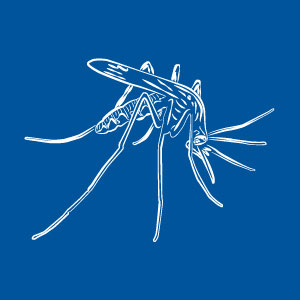
This component addresses objective 4 (vector bionomics) through a study titled “Impact of Seasonal Variability on Malaria and Rift Valley Fever Vector Bionomics and Infection Rates in Baringo, Kenya”.
Overall objective:
The overall objective is to assess the impact of seasonal variability in climatic factors on malaria and Rift Valley fever vector bionomics and infection status in Baringo, Kenya.Specific objectives:
This overall objective includes the following specific objectives:- To investigate how variability in temperature and rainfall influences malaria and RVF vector habitat preferences.
- To assess the effects of variations in temperature and rainfall on malaria and RVF vector densities.
- To assess the impact of variability in the temperature and rainfall on infection status of malaria and RVF vectors.
Methods:
The entomology component is concerned with the generation of both qualitative (presence, distribution and habitat preference of different mosquito vector species) and quantitative (variability in vector density, species abundance and their infection status) data. This is done by sampling mosquito larvae from selected breeding habitats and sampling adult mosquitoes from selected houses located in close proximity to larvae breeding sites within stratified zones based on elevation. Mosquito larvae are collected using a standard mosquito dipper (350ml) or by hand picking using a pipette, while indoor and outdoor adult mosquitoes are collected using the PSC and CDC light traps, respectively. The vectors collected are identified to species level morphologically using appropriate taxonomic keys.
Expected outputs:
Once the entomology component is completed, it is expected that the following will be known:
- The presence and distribution of mosquitoes transmitting malaria and RVF
- The habitat preference of different mosquito species
- Adult vector densities under changing weather conditions
- Infection status of mosquitoes transmitting malaria and RVF






